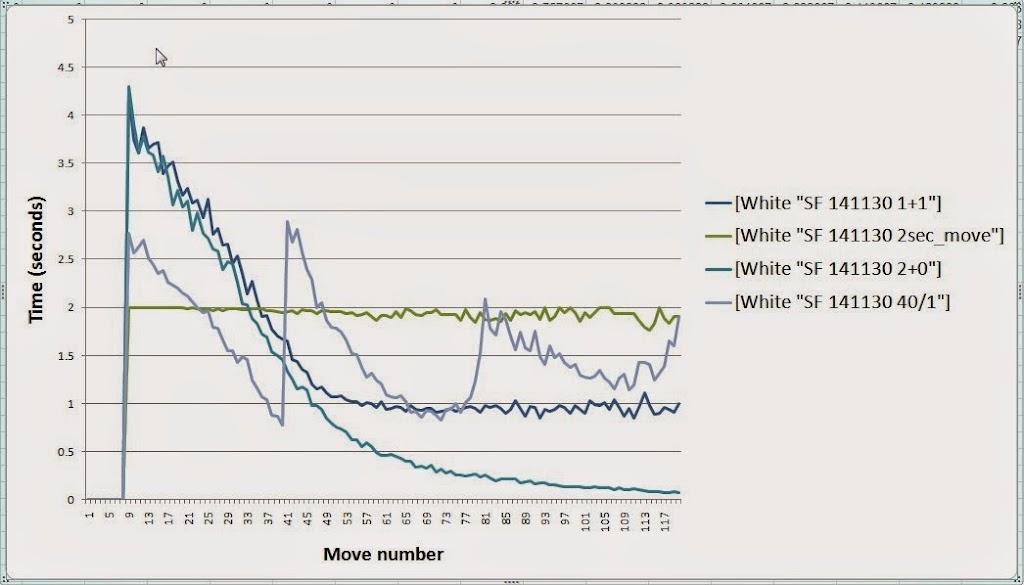Uri Blass wrote: ↑Thu Jan 02, 2020 12:00 pm
Laskos wrote: ↑Thu Jan 02, 2020 11:18 am
Guenther wrote: ↑Thu Jan 02, 2020 10:21 am
Gabor Szots wrote: ↑Thu Jan 02, 2020 9:28 am
I am very much in favour of incremental clock which in my case (I currently test at 40/2) would be 4+2, with a ratio of 120, while approximately keeping total game time the same.
...
I guess this was a typo and you meant 2+2 instead of 4+2?
40/2 is similar (just a bit weaker IIRC) compared to 2+1 strength-wise, but 2+1 usually consumes less total time per game. Also, the time usage curve is smoother and more efficient with 2+1.
I think that in order to know if 40/2 is a bit weaker than 2+1 we need to optimize existing time management for both time controls.
I doubt if engines are optimized for 40/2 time control(all the tests with stockfish are done with incremental time control and not with time control like 40/2 so I suspect engines are not optimized for this time control and may be too slow in the first moves(or too fast in the first moves).
I am not sure if using optimal time control for 40/2 is really weaker than using optimal time control for 2+1
I wonder if it is not possible to increase the playing strength of many engines by modifying the time control to time control that in theory is not better
for example
replace 40/2 repeating by 20/1:10+20/50+40/2
It is clear that with optimal time control it is not worse to have 40/2(because the engine may assume the second time control and get the same result) but it is not clear for me that practically engines are not going to perform better with the second time control.
It was studied.
First a note.
40/2 is on average some ~15% longer in games than 2+1, so even if they come very close Elo-wise, 2+1 is better.
The time usages of engines are not arbitrary. For the same amount of spent time, the decaying curve after move 20 or so to some almost constant small increment was shown to be optimal time usage for engines. The experiment is doable. Take for the move interval 20-30 double time for one engine versus single time for the same engine. The same time for both engines for the rest of the moves. See the outcome in self-games. Compare it to total doubling in time Elo difference. This way, on intervals, I found that IIRC moves 10-20 are the most important in games, moves 3-10 just a bit less important (this was somehow a surprise, and I am not sure of it), then importance after the move 20 decreased, and to move 50-60 became small and close to (diminishing a bit) constant to moves 100+. This shape is not arbitrary and not dependent on a particular engine and its time usage implementation.
The time control which closely resembles this type of curve, independently of the engine used, is "base + inc".
40/X simply cannot be adapted to play that well, the moves 41-80 are FAAAR less important than the moves 1-40. Seeing the result, independently of engine, "base + inc" comes as no-brainer as optimum time usage at fixed total time. The details sure might depend on the engine, how is the shape in moves 1-20, how fast is the decay of time usage towards the tail function of material on the board, complexity of positions, etc. With a very good time usage implementation, even "total time per game" can become very competitive, to being equal to the best of "base + inc". But not 40/X, one can do nothing with the time usage implementation in his engine in this case to approach the efficiency of a well chosen and implemented "base + inc" time usage.




